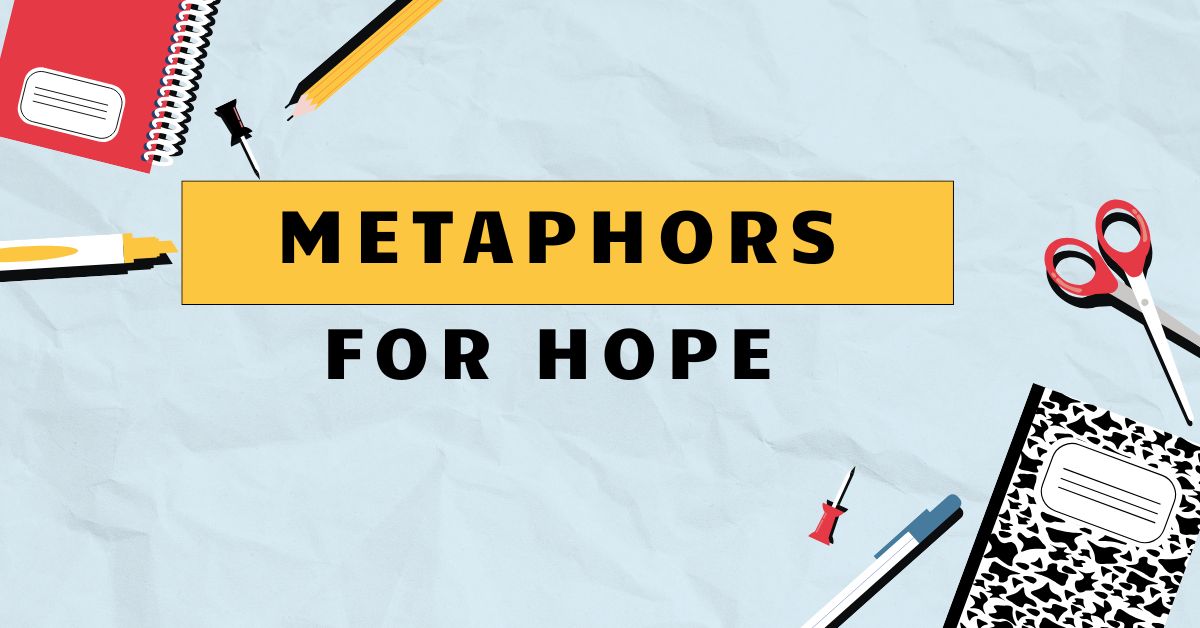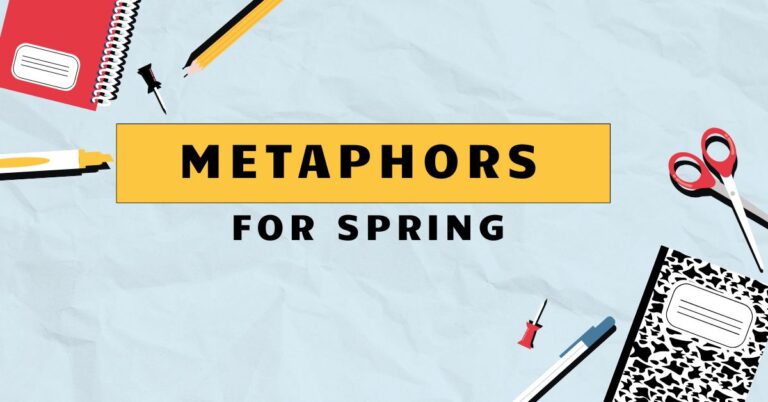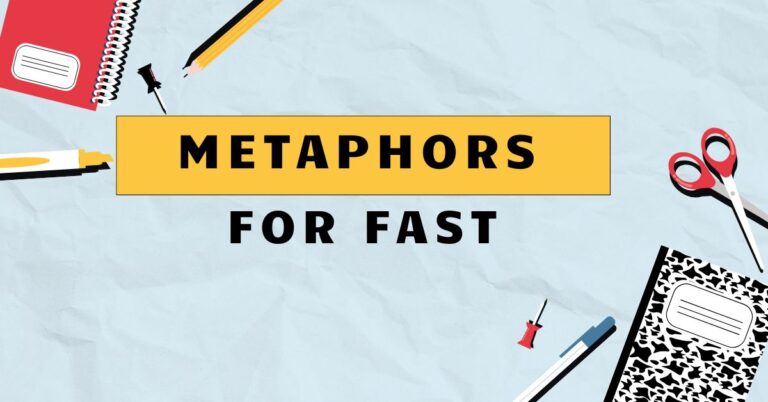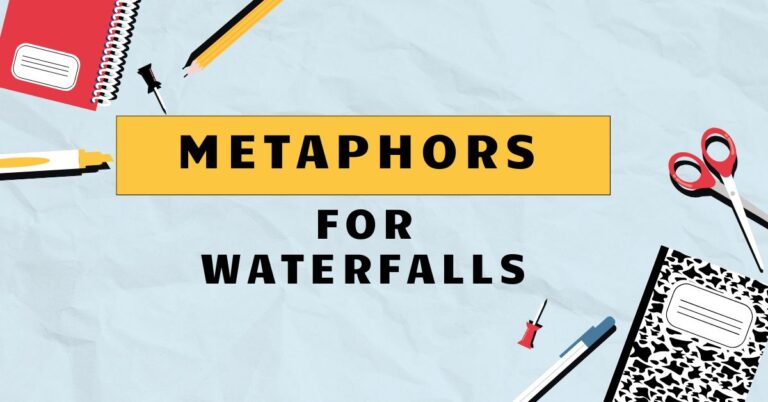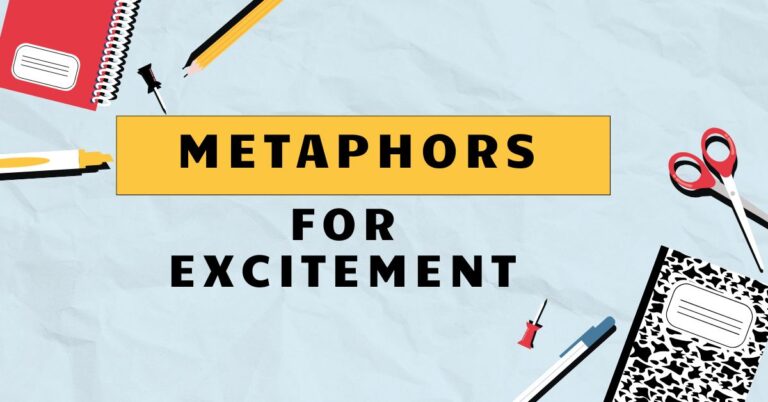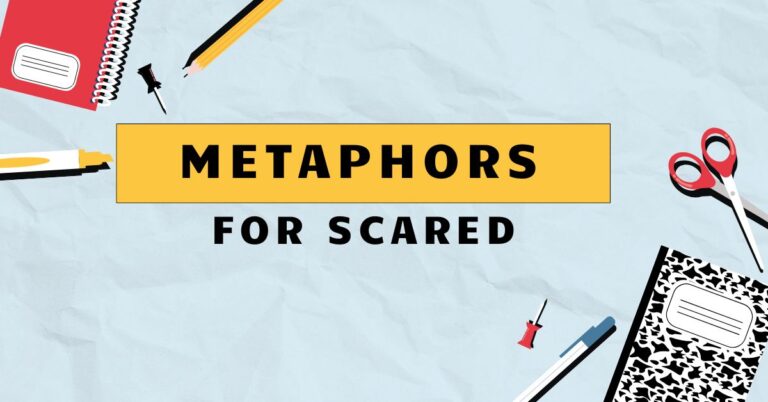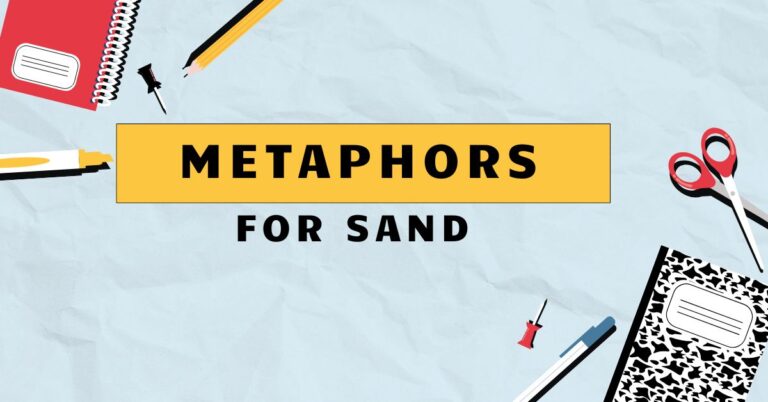27 Metaphors for Hope: Understanding Figurative Language
Hope, an abstract concept, often escapes concrete definition. To grasp its essence and convey its power, we turn to metaphors.
Metaphors for hope are not mere embellishments; they are essential tools for understanding and expressing the human experience of anticipation and resilience. This article explores the diverse landscape of hope-related metaphors, providing a comprehensive guide for students, writers, and anyone seeking to deepen their understanding of this vital aspect of language and emotion.
Mastering these metaphors enhances both comprehension and communication skills, allowing for more nuanced and impactful expression. This guide will offer detailed explanations, examples, and exercises to solidify your understanding.
Table of Contents
- Introduction
- Definition of Metaphor and Hope
- Structural Breakdown of Hope Metaphors
- Types of Hope Metaphors
- Examples of Metaphors for Hope
- Usage Rules for Metaphors for Hope
- Common Mistakes in Using Metaphors for Hope
- Practice Exercises
- Advanced Topics
- FAQ
- Conclusion
Definition of Metaphor and Hope
Ametaphoris a figure of speech that directly compares two unlike things without using “like” or “as.” It asserts that one thingisanother, creating a vivid and often surprising connection. Metaphors are powerful tools for conveying complex ideas and emotions in a concise and memorable way.
They enrich language by adding layers of meaning and inviting the reader to make imaginative leaps.
Hope, in its essence, is an optimistic state of mind based on an expectation of positive outcomes with respect to events and circumstances in one’s life or the world at large. It’s a feeling of expectation and desire for a certain thing to happen.
Hope can be a powerful motivator, driving individuals to persevere through challenges and strive for a better future. It’s the belief that even in the face of adversity, positive change is possible.
When we combine these concepts, metaphors for hope become powerful linguistic devices. They transform the abstract feeling of hope into something tangible and relatable, using imagery and comparison to illuminate its multifaceted nature.
By exploring these metaphors, we gain a deeper understanding of hope’s role in human psychology and its expression in art and literature.
Structural Breakdown of Hope Metaphors
Understanding the structure of a metaphor involves identifying thetenor, thevehicle, and theground. The tenor is the subject being described (in this case, hope).
The vehicle is the object or concept used to represent the tenor. The ground is the shared characteristic or similarity between the tenor and the vehicle.
Let’s break down an example:
Consider the metaphor: “Hope is a fragile seedling.”
- Tenor: Hope
- Vehicle: A fragile seedling
- Ground: The shared characteristics of vulnerability, potential for growth, and need for nurturing.
The effectiveness of a metaphor relies on the strength and relevance of the ground. A well-chosen vehicle will resonate with the audience and create a clear and impactful understanding of the tenor.
The structural elements work together to create a vivid image and emotional connection.
Another structural aspect to consider is theextended metaphor. This involves developing a single metaphor over multiple sentences or even an entire poem or passage.
An extended metaphor allows for a more complex and nuanced exploration of the subject matter, building a rich tapestry of imagery and meaning. For instance, the “fragile seedling” metaphor could be extended to describe the process of nurturing hope, the threats it faces, and the potential for it to blossom into something strong and resilient.
Types of Hope Metaphors
Metaphors for hope can be categorized based on the types of imagery they employ. Here are some common categories:
Light and Darkness
Light often represents hope, while darkness represents despair or uncertainty. These metaphors are deeply ingrained in human consciousness, drawing on our primal associations with light as a source of safety, warmth, and knowledge, and darkness as a realm of fear and the unknown.
The contrast between light and darkness provides a powerful framework for expressing the presence or absence of hope.
Nature and Growth
Nature provides a rich source of metaphors for hope, with images of seeds, plants, and blossoming flowers symbolizing potential, resilience, and renewal. These metaphors tap into our understanding of natural cycles and the inherent drive for life and growth.
The imagery of nature often evokes a sense of optimism and the possibility of overcoming adversity.
Journeys and Destinations
Life’s journey is a common metaphor, and hope often plays a crucial role in guiding us towards our desired destinations. These metaphors emphasize the importance of perseverance, resilience, and a belief in a positive outcome.
The journey itself can represent the challenges and obstacles we face, while the destination symbolizes our goals and aspirations.
Weather and Seasons
Weather and seasons can symbolize the changing fortunes of life, with sunny days representing times of hope and prosperity, and stormy weather representing periods of hardship and despair. The cyclical nature of the seasons also offers a metaphor for renewal and the promise of better times ahead.
These metaphors often reflect the ebb and flow of emotions and experiences.
Emotional States
Hope itself can be metaphorically described through other emotional states, such as a feeling of warmth, lightness, or a sense of inner strength. These metaphors tap into our understanding of the interconnectedness of emotions and the way in which hope can influence our overall well-being.
They offer a more abstract and introspective way of expressing the experience of hope.
Examples of Metaphors for Hope
The following tables provide examples of metaphors for hope, categorized by the types discussed above. Each example is designed to illustrate the specific imagery and emotional resonance associated with each category.
Table 1: Light and Darkness Metaphors for Hope
This table contains examples that use light and darkness imagery to convey the presence or absence of hope.
| Metaphor | Explanation |
|---|---|
| Hope is a beacon in the darkness. | Hope provides guidance and clarity during difficult times. |
| A flicker of hope remained. | Even a small amount of hope can be significant. |
| Hope dawned on the horizon. | Hope emerged gradually, like the rising sun. |
| Hope is the light at the end of the tunnel. | Hope represents the promise of relief after a long period of hardship. |
| Despair had eclipsed all hope. | Despair had completely extinguished any sense of hope. |
| Hope is a guiding star. | Hope provides direction and inspiration. |
| The darkness of despair gave way to the light of hope. | A shift from hopelessness to optimism occurred. |
| His eyes shone with hope. | His expression reflected a strong sense of hope. |
| Hope is a sunbeam breaking through the clouds. | Hope offers a moment of brightness during a cloudy period. |
| The flame of hope flickered but did not die. | Hope remained alive despite facing challenges. |
| Hope illuminated her path forward. | Hope provided clarity and direction for her future. |
| A glimmer of hope sparked within him. | A small amount of hope suddenly arose in him. |
| Hope is the morning light after a long night. | Hope represents a fresh start and renewed energy. |
| She carried a torch of hope for the future. | She maintained a strong belief in a positive future. |
| The light of hope never faded in his heart. | His hope remained constant and unwavering. |
| Hope is a lighthouse guiding lost ships. | Hope provides guidance and safety in uncertain situations. |
| Even in the darkest night, hope is a star. | Hope remains present even in the most difficult circumstances. |
| The shadow of despair could not extinguish her hope. | Her hope was strong enough to withstand despair. |
| His hope was a fragile candle in a vast darkness. | His hope was small and vulnerable in a difficult situation. |
| Hope is the sunrise promising a new day. | Hope represents a fresh start and new opportunities. |
| A faint light of hope peeked through the cracks of despair. | A small amount of hope was visible even in a situation filled with despair. |
| Hope is a radiant beam cutting through the fog of uncertainty. | Hope provides clarity and direction in a confusing situation. |
| The lamp of hope guided them through the treacherous path. | Hope provided guidance and safety during a difficult journey. |
| Her hope was a beacon attracting others to safety. | Her hope inspired and guided others in need. |
Table 2: Nature and Growth Metaphors for Hope
This table contains examples that use imagery of nature, growth, and the life cycle to express hope.
| Metaphor | Explanation |
|---|---|
| Hope is a seed waiting to sprout. | Hope has the potential to grow and flourish. |
| Hope blossomed in her heart. | Hope grew and thrived within her. |
| Hope is a sturdy tree weathering the storm. | Hope is resilient and can withstand challenges. |
| Hope is the first bloom of spring. | Hope represents renewal and new beginnings. |
| Hope withered under the harsh conditions. | Hope diminished due to difficult circumstances. |
| Hope is a fertile ground for dreams. | Hope provides a foundation for achieving aspirations. |
| She nurtured her hope like a delicate flower. | She carefully cultivated and protected her hope. |
| Hope is the fruit of perseverance. | Hope is the reward for enduring hardship. |
| His hope was a tiny sprout pushing through the concrete. | His hope was persistent and overcame obstacles. |
| Hope is the rain that nourishes the soul. | Hope provides sustenance and revitalization. |
| Hope is a vine that climbs towards the sun. | Hope strives towards growth and positivity. |
| Her hope took root and grew stronger each day. | Her hope became firmly established and increased in strength. |
| Hope is the bud that promises a beautiful flower. | Hope holds the potential for future beauty and fulfillment. |
| He guarded his hope like a precious garden. | He protected and cherished his hope. |
| Hope is the harvest after a season of hard work. | Hope is the reward for dedication and effort. |
| Like a sunflower, her hope always turned towards the light. | Her hope consistently focused on positivity and optimism. |
| Hope is the sap that keeps the tree of life alive. | Hope provides essential nourishment and vitality. |
| Even in the barren desert, a seed of hope remained. | Hope persisted even in the most desolate circumstances. |
| Her hope was a resilient weed, pushing through the cracks in the pavement. | Her hope was strong and persevered despite challenges. |
| Hope is the gentle breeze that carries the scent of blossoms. | Hope brings a sense of freshness and promise. |
| Hope is the fertile soil where dreams can take root. | Hope provides a nurturing environment for aspirations. |
| His hope was a small plant reaching for the sunlight. | His hope was striving for growth and positivity. |
| Hope is a protective canopy sheltering from the storm. | Hope provides comfort and security during difficult times. |
| She watered her hope with determination and perseverance. | She nurtured her hope with effort and resilience. |
Table 3: Journeys and Destinations Metaphors for Hope
This table contains examples that use imagery of journeys, destinations, and pathways to represent hope.
| Metaphor | Explanation |
|---|---|
| Hope is the compass guiding our journey. | Hope provides direction and purpose in life. |
| Hope is the road that leads to a better future. | Hope offers a path towards improvement and progress. |
| Hope sustained them on their long and arduous journey. | Hope provided strength and endurance during a difficult time. |
| Hope is the destination that keeps us moving forward. | Hope represents the goal that motivates us. |
| He lost his way, and his hope dwindled. | He became lost and discouraged, losing his sense of hope. |
| Hope is the bridge that connects us to our dreams. | Hope provides a means of achieving our aspirations. |
| She carried her hope like a map, guiding her through uncertainty. | She used her hope as a guide to navigate difficult situations. |
| Hope is the fuel that powers our journey through life. | Hope provides the energy and motivation to keep going. |
| His hope was a lighthouse, guiding him safely to shore. | His hope provided guidance and safety during a challenging time. |
| Hope is the stepping stone to a brighter tomorrow. | Hope represents a positive step towards a better future. |
| Hope is the North Star, guiding us through the darkest night. | Hope provides constant direction and reassurance. |
| Their hope was a sturdy vessel sailing through stormy seas. | Their hope was strong and resilient in the face of adversity. |
| Hope is the path that winds through the mountains of despair. | Hope offers a way to navigate challenging obstacles. |
| He clung to his hope like a lifeline in a turbulent sea. | He desperately held onto his hope for survival. |
| Hope is the train that carries us to our desired destination. | Hope provides a means of reaching our goals and aspirations. |
| Like a seasoned traveler, her hope was unwavering despite the hardships. | Her hope remained constant and strong despite challenges. |
| Hope is the wings that allow us to soar above our troubles. | Hope provides the freedom and ability to overcome difficulties. |
| Even when the road was blocked, a detour of hope appeared. | Even when faced with obstacles, a new path of hope emerged. |
| Her hope was a sturdy bridge spanning the chasm of fear. | Her hope provided a means of overcoming fear and uncertainty. |
| Hope is the summit that inspires us to climb higher. | Hope motivates us to strive for greater achievements. |
| Hope is the passport to a brighter future. | Hope provides access to new opportunities and possibilities. |
| His hope was a reliable map in the wilderness of doubt. | His hope provided guidance and clarity in a confusing situation. |
| Hope is a parachute, allowing us to land safely from great heights. | Hope provides a means of surviving difficult situations. |
| She packed her hope like essential supplies for a long journey. | She prepared herself with hope to endure a challenging experience. |
Table 4: Weather and Seasons Metaphors for Hope
This table presents examples using weather and seasonal imagery to depict hope.
| Metaphor | Explanation |
|---|---|
| Hope is the sunshine after the rain. | Hope represents joy and relief after a period of sadness. |
| Hope is the spring that follows a long winter. | Hope symbolizes renewal and new beginnings after a difficult time. |
| The storm of despair passed, and the sun of hope emerged. | A period of hopelessness ended, and optimism returned. |
| Hope is a warm breeze on a cold day. | Hope offers comfort and solace during a challenging time. |
| His hope was a fragile snowflake, melting in the face of reality. | His hope was delicate and easily destroyed by harsh circumstances. |
| Hope is the rainbow after the storm. | Hope represents beauty and promise after a difficult experience. |
| She held onto her hope like a shield against the harsh winter. | She protected her hope from the negativity and challenges around her. |
| Hope is the gentle rain that nourishes a parched land. | Hope provides revitalization and sustenance during a time of need. |
| His hope was a summer breeze, bringing relief from the heat of despair. | His hope offered comfort and respite from feelings of hopelessness. |
| Hope is the harvest moon, illuminating the path forward. | Hope provides clarity and guidance during a time of uncertainty. |
| Hope is the first sign of thaw after a long freeze. | Hope indicates the beginning of a positive change or improvement. |
| Their hope was a sturdy oak, weathering every season. | Their hope was resilient and able to withstand any challenges. |
| Hope is the gentle drizzle that precedes a vibrant bloom. | Hope signals the beginning of a period of growth and prosperity. |
| He nurtured his hope like a farmer tending his crops in the spring. | He carefully cultivated and protected his hope for future success. |
| Hope is the crisp autumn air, invigorating the spirit. | Hope revitalizes and renews one’s sense of purpose. |
| Like the changing seasons, her hope was always renewed. | Her hope consistently returned and remained strong over time. |
| Hope is the sunshine that melts away the frost of despair. | Hope eliminates feelings of hopelessness and negativity. |
| Even during the harshest winter, the promise of spring fueled her hope. | Even in the most difficult times, the anticipation of better days sustained her hope. |
| His hope was a sturdy umbrella protecting him from the storms of life. | His hope provided protection and resilience during challenging times. |
| Hope is the first robin of spring, announcing the arrival of new possibilities. | Hope heralds the beginning of new opportunities and positive changes. |
Table 5: Emotional States Metaphors for Hope
This table contains examples where hope is compared to other emotional states or feelings.
| Metaphor | Explanation |
|---|---|
| Hope is a warm embrace on a cold day. | Hope provides comfort and reassurance. |
| Hope is a song that lifts the spirit. | Hope inspires and uplifts. |
| Hope is a gentle hand guiding you forward. | Hope provides support and direction. |
| Hope is a quiet strength that endures. | Hope is a resilient and unwavering force. |
| His hope was a fragile whisper, barely audible above the noise of despair. | His hope was weak and easily overwhelmed by negativity. |
| Hope is a smile that brightens the darkest day. | Hope brings joy and positivity. |
| She carried her hope like a precious secret, close to her heart. | She cherished and protected her hope. |
| Hope is a comforting presence in times of trouble. | Hope provides solace and support during difficult times. |
| His hope was a burning ember, glowing with determination. | His hope fueled his resolve and perseverance. |
| Hope is a gentle wave washing away the pain. | Hope provides healing and relief from suffering. |
| Hope is a strong current pulling you toward shore. | Hope provides a powerful force leading to safety and security. |
| Their hope was a protective shield against negativity. | Their hope provided resilience against negative influences. |
| Hope is a soothing balm for a wounded soul. | Hope provides comfort and healing for emotional pain. |
| He clung to his hope like a lifeline in a sea of despair. | He desperately held onto his hope for survival. |
| Hope is a gentle whisper of encouragement in a moment of doubt. | Hope provides reassurance and support during times of uncertainty. |
| Like a warm fire, her hope radiated comfort and strength. | Her hope provided warmth, comfort, and resilience. |
| Hope is a beacon of resilience in the face of adversity. | Hope shines as a symbol of strength and perseverance. |
| Even when surrounded by darkness, a spark of hope flickered within her. | Even in the darkest times, a small amount of hope persisted. |
| His hope was an unbreakable bond connecting him to a brighter future. | His hope created a strong connection to the possibility of a positive future. |
| Hope is the quiet confidence that whispers “you can” in the face of fear. | Hope provides inner strength and belief in oneself. |
Usage Rules for Metaphors for Hope
Using metaphors effectively requires careful consideration of several factors. First, ensure thevehicleis appropriate for thetenor.
The comparison should be logical and resonate with the audience. Avoid using clichéd metaphors that have lost their impact through overuse.
Strive for originality and freshness in your imagery.
Consistencyis also crucial, especially when using extended metaphors. Maintain a consistent tone and imagery throughout the passage to avoid confusing the reader.
Mixing metaphors can create a jarring effect and undermine the overall message. For instance, avoid combining “hope is a fragile seedling” with “hope is a mighty fortress” in close proximity.
The images contradict each other.
Consider youraudienceand the context in which you are using the metaphor. A metaphor that is effective in one context may not be appropriate in another.
Tailor your language to suit the specific audience and purpose of your communication. For example, a highly abstract or complex metaphor may not be suitable for a younger audience.
Common Mistakes in Using Metaphors for Hope
One common mistake is usingmixed metaphors, which occur when two or more inconsistent metaphors are combined. This can create confusion and undermine the effectiveness of the writing.
Here are some examples:
| Incorrect | Correct | Explanation |
|---|---|---|
| “Hope is a fragile seedling that can weather any storm.” | “Hope is a fragile seedling that needs careful nurturing.” | The image of a fragile seedling is inconsistent with the ability to weather any storm. |
| “Hope is the light at the end of the tunnel, but it’s also a long and winding road.” | “Hope is the light at the end of the tunnel, guiding us forward.” | Combining the “light at the end of the tunnel” with “a long and winding road” creates a confusing image. |
| “Hope is a beacon of light that can be nipped in the bud.” | “Hope is a beacon of light that guides us through darkness.” | The phrase “nipped in the bud” is more appropriate for a plant metaphor, not a beacon of light. |
Another common mistake is usingclichéd metaphors. These are metaphors that have been used so frequently that they have lost their impact and originality.
While they may be easily understood, they often fail to engage the reader or create a vivid impression. Strive for fresh and original metaphors to make your writing more compelling.
Finally, avoid using metaphors that aretoo abstract or obscure. The metaphor should be clear and easily understood by the audience.
If the connection between the tenor and the vehicle is too tenuous, the metaphor will fail to communicate effectively. Ensure that the ground is strong and readily apparent.
Practice Exercises
These exercises will test your understanding of metaphors for hope. Identify the metaphor in each sentence and explain its meaning.
Then, create your own original metaphor for hope based on the prompt.
Exercise 1: Identifying Metaphors
Identify the metaphor related to hope in each sentence and explain what it means.
| Question | Answer |
|---|---|
| 1. Hope is the anchor that keeps my soul steady. | Metaphor: Hope is the anchor. Meaning: Hope provides stability and security. |
| 2. A single spark of hope can ignite a revolution. | Metaphor: Spark of hope can ignite a revolution. Meaning: A small amount of hope can lead to significant change. |
| 3. After the devastating fire, hope was a fragile phoenix rising from the ashes. | Metaphor: Hope was a fragile phoenix. Meaning: After destruction, hope is reborn and resilient. |
| 4. Hope is the compass that guides us through the wilderness of despair. | Metaphor: Hope is the compass. Meaning: Hope provides direction during difficult times. |
| 5. The seeds of hope, planted long ago, finally began to sprout. | Metaphor: Seeds of hope. Meaning: Hope has the potential to grow and flourish over time. |
| 6. Hope is a bridge that spans the river of doubt. | Metaphor: Hope is a bridge. Meaning: Hope provides a way to overcome uncertainty. |
| 7. Hope is a lifeline thrown to a drowning man. | Metaphor: Hope is a lifeline. Meaning: Hope is a critical source of rescue and salvation. |
| 8. Hope is the music that fills the silence of despair. | Metaphor: Hope is the music. Meaning: Hope brings joy and comfort to a situation of sadness. |
| 9. Hope is the shield that protects us from the arrows of negativity. | Metaphor: Hope is the shield. Meaning: Hope provides protection from negativity. |
| 10. Hope is the sail that catches the wind of opportunity. | Metaphor: Hope is the sail. Meaning: Hope allows us to take advantage of new opportunities. |
Exercise 2: Creating Original Metaphors
Create an original metaphor for hope based on the following prompts:
| Prompt | Example Answer |
|---|---|
| 1. Hope as a natural phenomenon. | Hope is the geyser that erupts after years of pressure, a testament to the earth’s enduring strength. |
| 2. Hope as a technological invention. | Hope is the GPS that recalibrates when you’re lost, always finding a new route to your destination. |
| 3. Hope as an artistic creation. | Hope is the unfinished symphony that inspires us to compose a brighter future. |
| 4. Hope as a culinary ingredient. | Hope is the spice that transforms a bland dish into a feast for the soul. |
| 5. Hope as a scientific principle. | Hope is the gravity that pulls us toward our dreams, keeping us grounded even when we feel weightless. |
| 6. Hope as an architectural structure. | Hope is the cornerstone upon which we build our dreams. |
| 7. Hope as a form of transportation. | Hope is the hot air balloon that lifts us above the clouds of despair. |
| 8. Hope as a healing process. | Hope is the bandage that allows wounds to heal and scars to fade. |
| 9. Hope as a mathematical concept. | Hope is the constant that ensures our future is greater than our past. |
| 10. Hope as a form of communication. | Hope is the whisper that encourages us when we are lost for words. |
Advanced Topics
For advanced learners, exploring the use of metaphors for hope in literature and rhetoric can be particularly rewarding. Analyze how famous authors and speakers have employed these metaphors to evoke emotions, persuade audiences, and convey complex ideas.
Consider the cultural and historical contexts that shape the meaning and impact of these metaphors.
Furthermore, delve into the psychological effects of metaphors on perception and cognition. Research how metaphors can influence our understanding of abstract concepts and shape our beliefs and attitudes.
Explore the role of metaphors in therapy and counseling, where they can be used to help individuals reframe their experiences and cultivate a sense of hope.
Finally, consider the ethical implications of using metaphors for hope. Examine how metaphors can be used to manipulate or mislead audiences, and develop a critical awareness of the potential for abuse.
Strive to use metaphors responsibly and ethically, with a commitment to truth and clarity.
FAQ
Here are some frequently asked questions about metaphors for hope:
- What is the difference between a metaphor and a simile?
Both metaphors and similes compare two unlike things, but a simile uses “like” or “as” to make the comparison explicit, while a metaphor directly equates the two things. For example, “Hope is like a light” is a simile, while “Hope is a light” is a metaphor.
- Why are metaphors useful for expressing abstract concepts like hope?
Metaphors make abstract concepts more concrete and relatable by associating them with tangible objects or experiences. This allows us to grasp the essence of hope more easily and communicate it more effectively.
- How can I avoid using clichéd metaphors?
Read widely, pay attention to the language around you, and strive for originality in your writing. Try to find fresh and unexpected ways to express familiar ideas.
- What are some common cultural associations with hope?
In many cultures, hope is associated with light, spring, and new beginnings. However, cultural associations can vary, so it’s important to be aware of the specific context in which you are using a metaphor.
- Can a metaphor be too complex?
Yes, a metaphor can be too complex if the connection between the tenor and the vehicle is too obscure or difficult to understand. Aim for clarity and relevance in your imagery.
- How do I identify the tenor, vehicle, and ground in a metaphor?
The tenor is the subject being described (hope), the vehicle is the object or concept used to represent the tenor, and the ground is the shared characteristic or similarity between the two.
- Is it possible to overuse metaphors?
Yes, too many metaphors can clutter
too much your writing and distract the reader. Use them judiciously and purposefully.
- How can metaphors for hope be used in everyday conversation?
Metaphors for hope can add color and expressiveness to your everyday conversations. They can help you communicate your feelings and inspire others.
- What is an extended metaphor?
An extended metaphor is a metaphor that is developed over multiple sentences or even an entire passage. It allows for a more complex and nuanced exploration of the subject matter.
- How can I improve my ability to create effective metaphors?
Practice regularly, experiment with different types of imagery, and seek feedback from others. The more you work with metaphors, the better you will become at using them effectively.
Conclusion
Metaphors for hope are powerful tools for understanding and expressing this vital human emotion. By exploring the different types of hope metaphors, understanding their structure, and practicing their usage, you can enhance your communication skills and gain a deeper appreciation for the richness and complexity of language.
Whether you are a student, a writer, or simply someone who wants to express themselves more effectively, mastering metaphors for hope will empower you to convey your thoughts and feelings with greater clarity and impact. Embrace the power of figurative language, and let your words shine with the light of hope.

